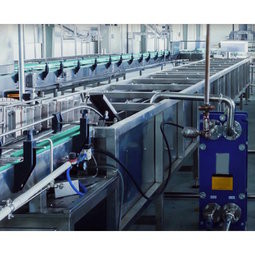
Published on 08/01/2016 | Use Cases
Statistical Process Control, or SPC, is used to look at things that have already happened and see if the outcome (often products in a manufacturing environment) are in conformance. It’s one of the oldest control methods around – and for good reason. It still works and holds a place in quality assurance. In fact, I don’t know if we would have Six Sigma today without SPC! A common tool used for monitoring SPC is a control chart, in which characteristics of a sample of items are periodically measured to assess conformance or variance to spec. Data is plotted and when a variance is flagged, production is stopped and it is fixed. The non-conforming products and the stop in production cost manufacturers time and money. Until now, we’ve used this method as a means to an end – but what if we could anticipate and correct for issues now?
The SPC Quality Assurance process only takes a look in the rear view mirror: it allows you to fix things after a conformance failure or issue is detected. While necessary and absolutely essential, it’s missing half the picture: what’s going to happen in the future?
Now imagine adding a “psychic” element to SPC: the ability “know” when a product is going to BECOME non-conforming just by monitoring and detecting minute variances in QA other historical data and notifying plant managers to make adjustments prior to products becoming defective.
This is the power of Industrial IoT. It looks backwards AND forwards.
Let’s talk about the forward-looking part for a minute.
Predictive analytics supports two different facets of the process: discovery of risk patterns (looking back), followed by instituting controls to detect imminent issues (looking forward). Simply stated, once these analytical applications have access to time-series data from a multitude of intelligent machines, they evaluate historical event streams occurring prior to undesired circumstances to identify sentinel events and sequences that are indicative of potential issues. Patterns are then integrated with real-time stream analysis to monitor the data communicated across the intelligent factory.
A lot of the frustration we see with SPC has to do the process. A recent series of articles in Plant Engineering talks about how the process can generate a lot of data, and how the data is only valuable if interpreted and given to the right people, in the right format, at the right time so they are able to take action. You have to see the WHOLE picture and you need new tools to do this effectively. At Wi-NEXT, we felt this frustration and then set out to find a better way.
With IIoT predictive analytics, you can become a psychic and know when something is going to happen and fix it before it happens. And save your company money and time in the process. The machines will tell you all you need to know.
So you have a legacy factory and in order to take advantage of SPC 2.0 and predictive analytics (and all the other great things IIoT has to offer) you need to retrofit your manufacturing environment. The task is not nearly simple as it seems. But I assure you: the benefits FAR outweigh the costs. The core issue is effecting the renovation of the plant supporting these information and analysis requirements without demanding a complete overhaul of the manufacturing environment. This suggests the need to have the ability to integrate and standardize easily the communication on the factory floor, and stream a massive amount of data to the analytics platform on-premise or in-cloud that then can rapidly apply early warning analytics to predictively identify potential issues, significantly reducing the number of “false alarms”.
End Node Wi-Fi enabled devices are inexpensive, small and have a huge ROI. With packaged solutions such as Wi-NEXT A4™ Edgeware Architecture , adding analytics intelligence and more more automation is now easier than ever.
Predictive analytics are being used by large companies and small, and their value is universal. Matthew Pietrzykowski, Senior Data Scientist at General Electric was interviewed on December 16, 2015 by Predictive Analytics World and he said, “Data science and in particular, predictive analytics, has a place in the corporate audit function. In fact, it’s a strategic part of how GE audits its various businesses in dispersed geographic locations.”
Wi-NEXT’s latest whitepaper Leveraging Predictive Analytics with Industrial Internet of Things to Deliver Operational Excellence published by Automation.com offers an in-depth look at how to take SPC to the next level and incorporate IIoT measures to improve productivity and quality. When all the pieces come together, these predictive analytics applications demonstrate value, and the deployment is bound to grow. The Wi-NEXT whitepaper reviews why it is important to consider alternatives that are amenable to extensibility, scalability, and most importantly, how to deliver a complete package with clear benefits to the business.
Download your free copy of Leveraging Predictive Analytics with Industrial Internet of Things to Deliver Operational Excellence , and see how incorporating a psychic element will save your factory valuable problem solving time and optimize production for better output.